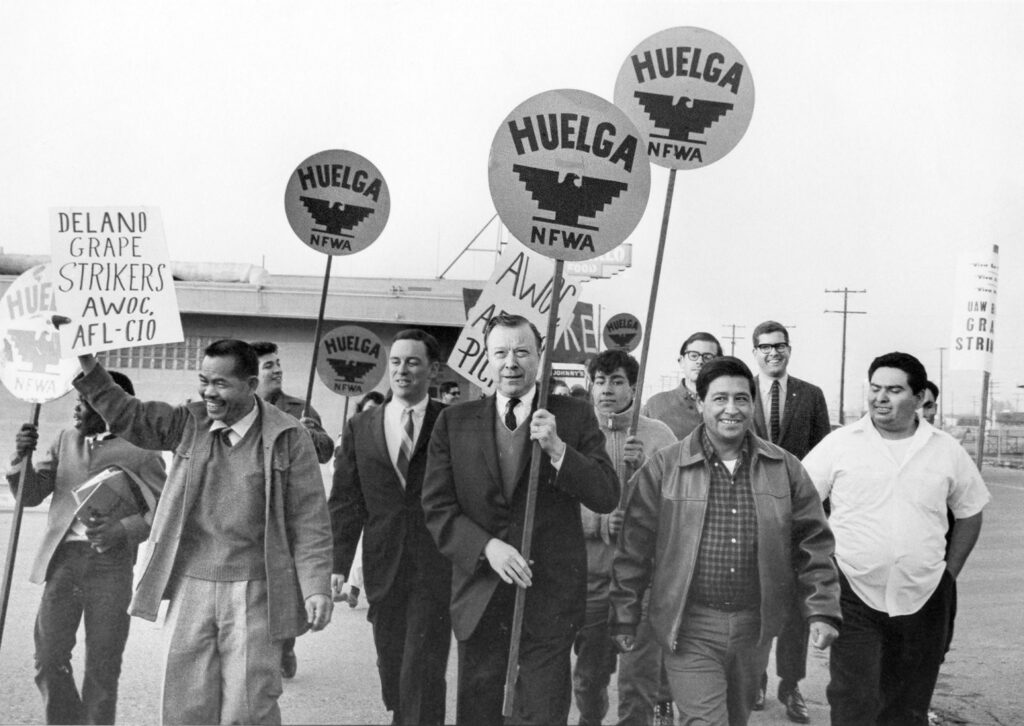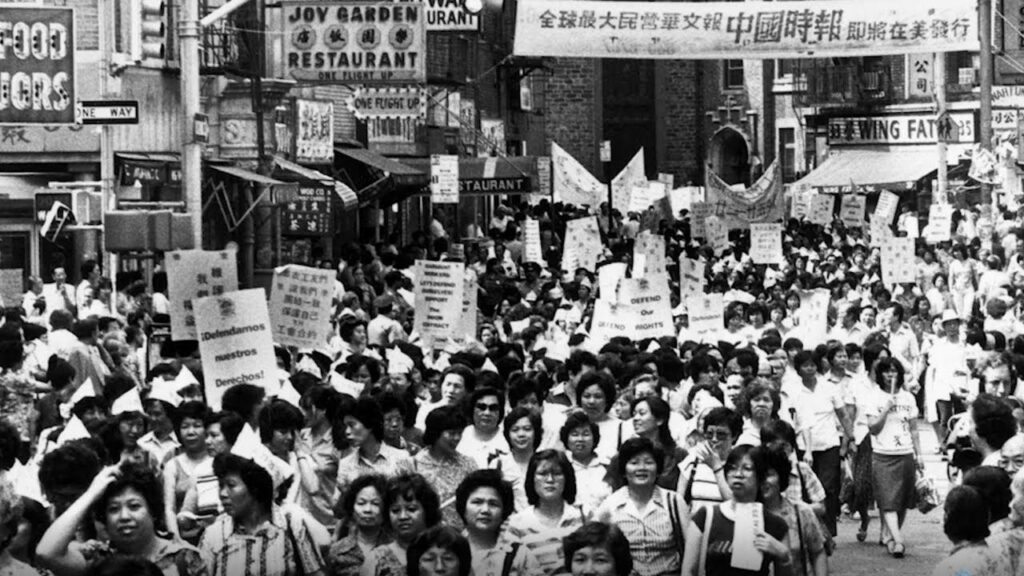In May, our nation celebrates Asian American, Native Hawaiian, and Pacific Islander (AANHPI) Heritage Month. The AANHPI community has played an essential role in American culture, diversity, and the economy. At UFCW, we recognize the critical role members of the AANHPI community have played as active leaders in labor movements, calling for improvements to labor conditions, and an increase in wages and worker benefits. As a result of these heroic community members, substantial change has been made.
The origins of this celebration date back to 1977, when Representative Frank Horton of New York and Senator Daniel Inouye of Hawaii introduced resolutions to proclaim a week in May as Pacific/Asian American Heritage Week. When neither of these resolutions passed, Representative Horton introduced a similar resolution in 1978, which was passed by the House and Senate and signed into law by President Jimmy Carter that same year. In 1992, Congress designated the month of May as Asian/Pacific American Heritage Month to commemorate the arrival of the first Japanese immigrants to the U.S. on May 7, 1843, and the completion of the transcontinental railroad on May 10, 1869.
Here are three things to know about the work done by AANHPI community members—past and present— to fight for justice for workers and union members nationwide.
HAWAII: 1946 – THE SUGAR STRIKE

On August 31, 1946, over 26,000 sugar workers refused to report to their jobs, shutting down all but one of the 34 sugar plantations across the Hawaiian islands—one of the most expensive strikes in history.
The International Longshore and Warehouse Union (ILWU) organized the strike as a protest against poor working conditions, lack of benefits, and employee mistreatment, fueled by an economy that colonial powers had historically controlled.
By 1946, one-fifth of Hawaii’s population, roughly 100,000 people, lived and worked on sugar plantations. With a diverse population of employees, including Chinese, Japanese, Korean, and Filipino workers, the ILWU made inclusivity a key part of their campaign, ensuring representative leadership in the strike committee and conducting multilingual meetings.
The organization of a diverse movement proved to be a success. After 79 days of striking, the ILWU secured housing, medical, pensions, and wage benefits for workers.
Today, Hawaii’s workforce represents the second-highest union density in the nation with 21.9 percent of employees being represented by a union. Ultimately, the 1946 Sugar Strike transformed the social and economic climate of Hawaii and improved working conditions across the region.
CALIFORNIA: 1969 – THE DELANO GRAPE STRIKE

On September 8, 1965, 2,000 Filipino American farm workers refused to report to their jobs picking grapes in the valley north of Bakersfield, California. This movement was organized by Larry Itliong of the Agricultural Workers Organizing Committee (AWOC), a predominantly Filipino union. Itliong and workers had one main goal – better working conditions for grape farmers.
About two weeks later, the National Farm Workers Association (NFWA), a group of Mexican American farmworkers led by Cesar Chavez and Dolores Huerta, joined the AWOC strike. Together, AWOC and NFWA formed what would be known as the United Farm Workers (UFW).
The UFW was determined to win—and after five years of striking and an international grape boycott, the Delano Grape strikers prevailed. New contracts were signed in 1970.
In the wake of the Delano Grape Strike’s success, Itliong formed a legacy of activism within his community. He resigned from the UFW in 1971 under the belief that the union lacked support for aging Filipino American farm workers. He was an elected delegate at the 1972 Democratic National Convention and oversaw the development of housing for retired Filipino farm workers. His initial involvement in the Delano Grape Strike and lifelong activism represents the role of Filipino Americans within the farm labor movement—the stories that have often gone untold.
NEW YORK CITY, CHINATOWN: 1982 – THE GARMENT STRIKE

On June 24, 1982, over 20,000 garment workers gathered in Columbus Park in New York City’s Chinatown. These workers—predominantly Chinese American women—rallied to demand better working conditions and livable wages.
The strike was organized by the International Ladies Garment Workers Union and was set in motion after contractors refused to renew union contracts that asked workers to give up already scarce benefits.
Holding signs that said, “Union workers: Let’s defend ourselves. Support the union contract,” “In union, there is strength,” and “Defend our rights,” tens of thousands of workers marched through the streets of Chinatown, demonstrating the power they held over the city’s economy and garment industry. The sight of togetherness and strength led contractors to fold. Only a few days after the strike began, contractors agreed to sign the union contracts.
The 1982 Chinatown Garment Strike was a historic victory, providing higher wages and benefits for tens of thousands of workers in the city and amplifying Asian American voices. Garment workers transformed the economic conditions of an industry that historically exploited them, changing the future of the labor movement.

The Asian Pacific American Labor Alliance, APALA, AFL-CIO, was founded in 1992 allowing API workers, union members, and allies to make strides in advancing immigrant, labor, and civil rights. APALA is a strong representation of efforts in modern AAPI labor movements with 22 chapters and pre-chapters and a national office in Washington D.C. More information can be found here: APALA – Home (apalanet.org)
The post UFCW Celebrates AANHPI Heritage Month appeared first on The United Food & Commercial Workers International Union.
